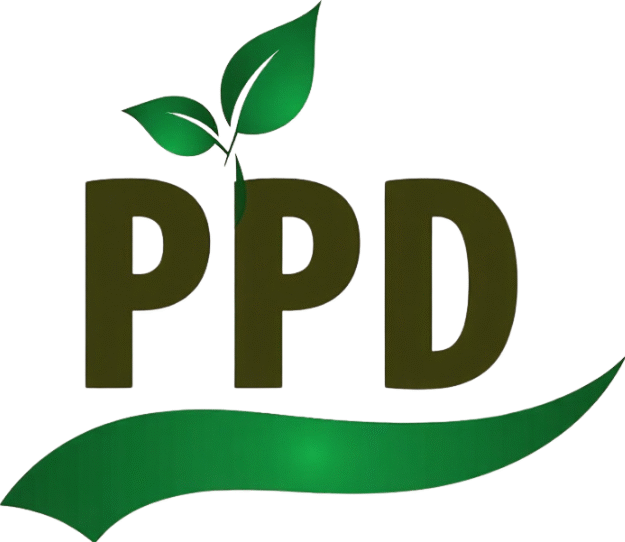In the face of climate change, global trade, and the rapid spread of plant pests and diseases, real-time data and spatial awareness have become crucial for protecting agricultural systems. Geographic Information Systems (GIS) offer a powerful solution. By mapping, analyzing, and visualizing spatial data, GIS is transforming how countries and institutions monitor plant health, assess risks, and respond to outbreaks. This article explores the role of GIS in plant health monitoring, its benefits, use cases, and strategies for implementation, particularly in regions with vulnerable ecosystems and limited resources.
What is GIS in the Context of Plant Health?
Geographic Information Systems (GIS) are digital tools that collect, manage, analyze, and display spatial or geographical data. In plant health, GIS is used to track the distribution and movement of pests, analyze environmental conditions that affect plant diseases, and support decision-making in pest surveillance, quarantine, and biosecurity measures.
Key Applications of GIS in Plant Health Monitoring
1. Pest and Disease Surveillance
- GIS helps track the spatial spread of pests such as locusts, fruit flies, or invasive weeds.
- Field data is integrated with satellite imagery to identify infestation hotspots.
2. Early Warning Systems
- GIS-based predictive models can forecast outbreaks by correlating pest behavior with weather, crop cycles, and topography.
- Alerts and risk maps can be generated to inform farmers and policymakers in advance.
3. Quarantine and Border Protection
- GIS maps help identify high-risk entry points for pests, enabling better allocation of inspection and surveillance resources.
- Visualizing pest interception trends aids in risk-based import controls.
4. Resource Optimization
- Targeted pesticide use, trapping, or biological control can be deployed in high-risk zones identified via GIS.
- Prevents blanket spraying, reducing environmental impact and costs.
5. Climate and Ecological Analysis
- GIS integrates climatic data to study how changes in temperature or rainfall influence pest dynamics.
- It supports adaptation strategies under changing agro-ecological zones.
Benefits of Using GIS in Plant Health Monitoring
| Benefit | Description |
|---|---|
| Real-time data visualization | Dynamic maps help authorities see outbreaks as they happen |
| Improved decision-making | Enables data-driven policies and responses |
| Efficient resource use | Targets interventions where they are most needed |
| Enhanced collaboration | Centralized platforms allow data sharing among stakeholders |
| Increased preparedness | GIS-based models help in proactive responses to emerging threats |
Case Studies and Global Examples
1. Locust Monitoring in East Africa
Countries used GIS platforms to track and predict desert locust swarms using real-time satellite data and field reports, leading to timely spraying and control.
2. Fall Armyworm in Southeast Asia
GIS helped visualize spread patterns across borders, enabling ASEAN countries to plan coordinated action and identify vulnerable crop areas.
3. Banana Wilt in Central Africa
GIS layers showing banana-growing zones, rainfall, and soil moisture were combined with disease data to contain Xanthomonas wilt.
Challenges in GIS Implementation
Despite its advantages, several barriers limit the widespread adoption of GIS in plant health:
| Challenge | Description |
|---|---|
| Data gaps | Lack of consistent, high-quality pest and environmental data |
| Technical capacity | Need for trained GIS specialists in NPPOs and field teams |
| Infrastructure limitations | Inadequate internet, software, or hardware in remote areas |
| Integration with surveillance | Poor linkage between field data collection and GIS platforms |
| Sustainability | GIS projects often rely on short-term donor funding |
Strategies for Strengthening GIS Use in Plant Health
1. Capacity Building
- Train plant protection staff in GIS software such as ArcGIS, QGIS, and mobile mapping apps.
- Develop GIS literacy in agricultural universities and extension services.
2. Data Integration
- Link field surveillance systems (like mobile pest recording apps) with centralized GIS databases.
- Promote interoperability among ministries, research institutions, and international partners.
3. Use of Open-Source Tools
- Encourage adoption of cost-effective tools like QGIS to overcome licensing barriers.
- Leverage freely available satellite data from sources like NASA, FAO, and Copernicus.
4. Regional and Global Collaboration
- Participate in regional GIS networks and early warning systems.
- Share mapping templates, pest occurrence layers, and risk models.
Overview Table: GIS Role in Plant Health Monitoring
| Application Area | GIS Function | Example Outcome |
|---|---|---|
| Surveillance | Map pest presence | Real-time spread tracking |
| Early Warning | Predict outbreaks | Forecasting pest emergence by location |
| Quarantine Management | Analyze entry risks | Border checks focused on high-risk points |
| Response Planning | Target interventions | Precision spraying in affected zones |
| Research and Policy | Analyze ecological patterns | Evidence-based regulatory decisions |
| Farmer Engagement | Visual alerts and advice | Community awareness and faster action |
Looking Ahead: GIS for Smarter Plant Protection
The future of plant health monitoring lies in integration—combining GIS with machine learning, remote sensing, mobile apps, and big data platforms. Mobile-based GIS tools allow farmers and extension workers to report pests instantly, creating real-time data streams for national monitoring systems. With ongoing climate shifts and increased pest mobility due to global trade, countries must invest in GIS as a critical infrastructure for plant biosecurity.
Governments, NGOs, and research bodies should prioritize GIS development as part of national phytosanitary strategies, ensuring that no outbreak goes undetected and no crop is left undefended.
3 Best One-Line FAQs
Q1. How does GIS help in plant health monitoring?
GIS maps and analyzes pest outbreaks, improving early detection and rapid response.
Q2. What are the benefits of using GIS in agriculture?
It optimizes surveillance, enhances decision-making, and reduces the spread of plant diseases.
Q3. Can developing countries use GIS for pest control?
Yes, especially with free tools and capacity-building support from global partners.
